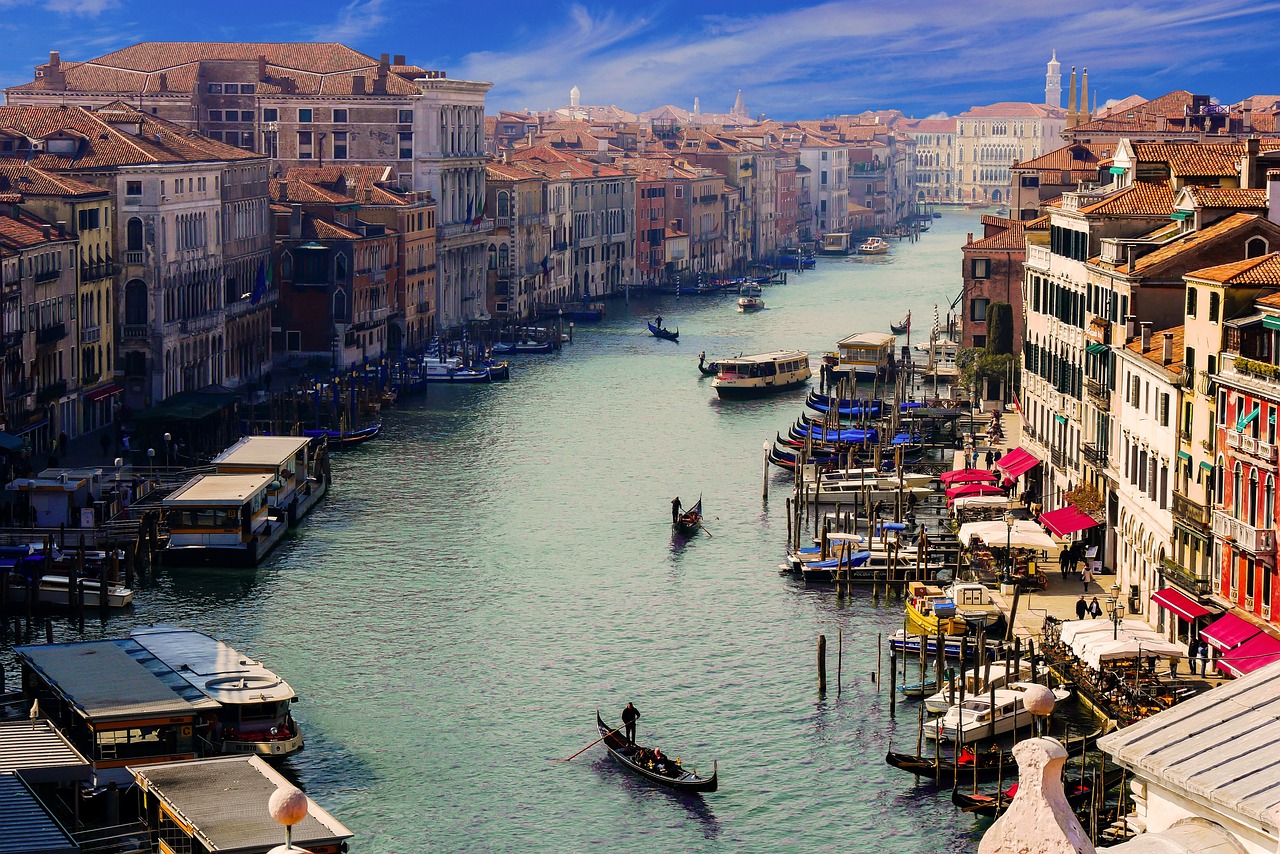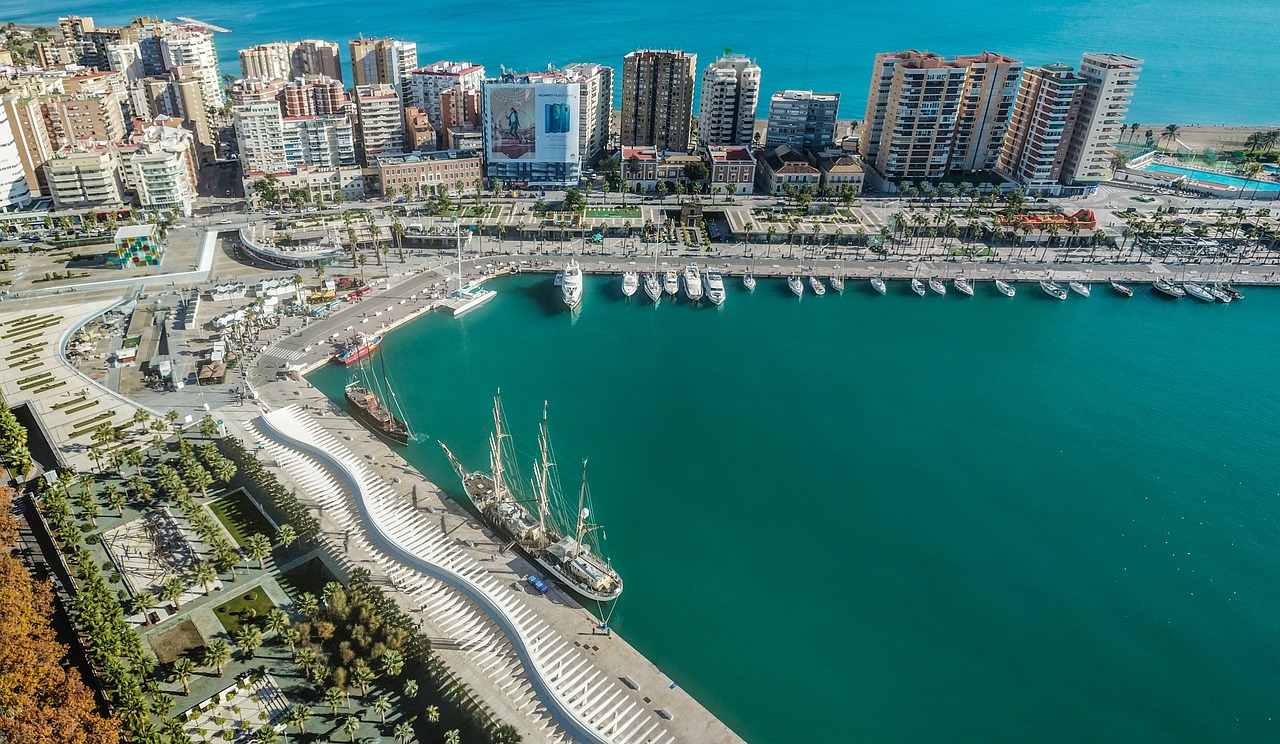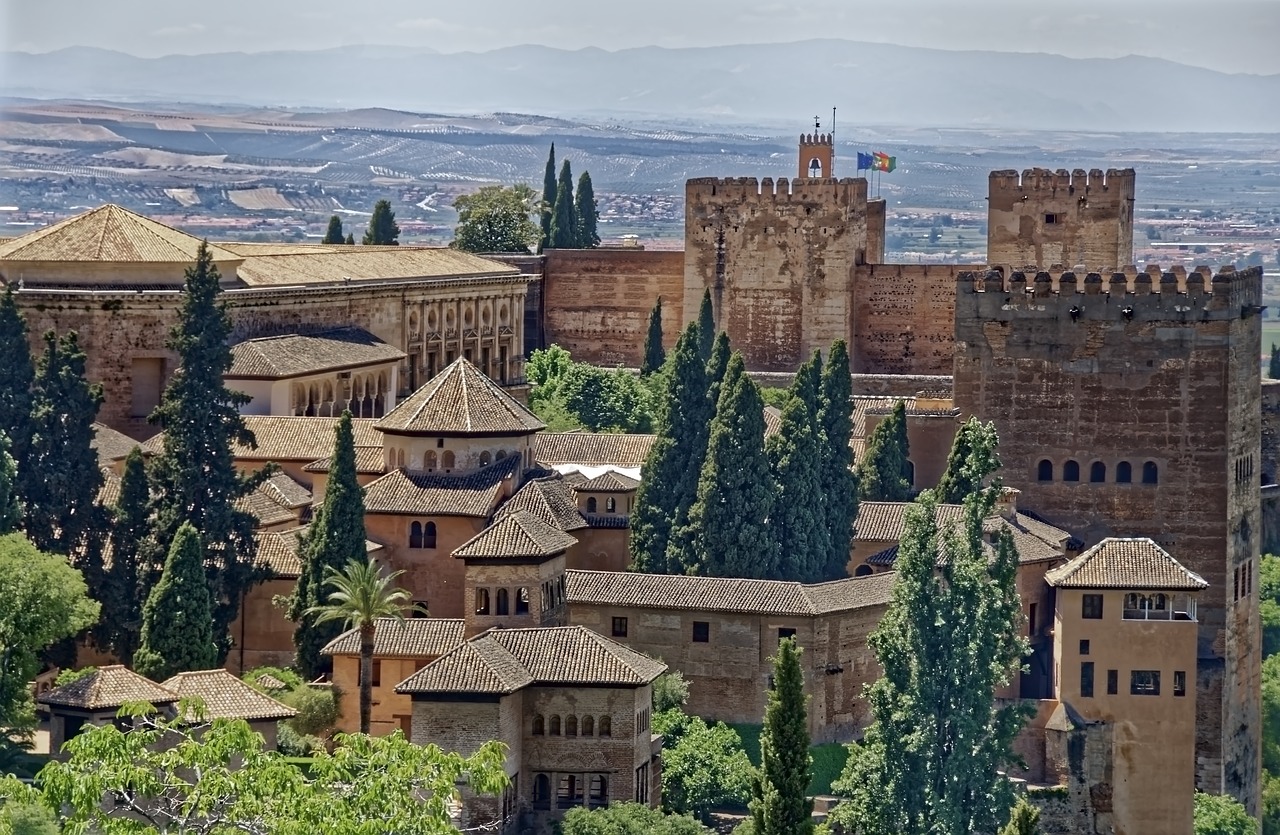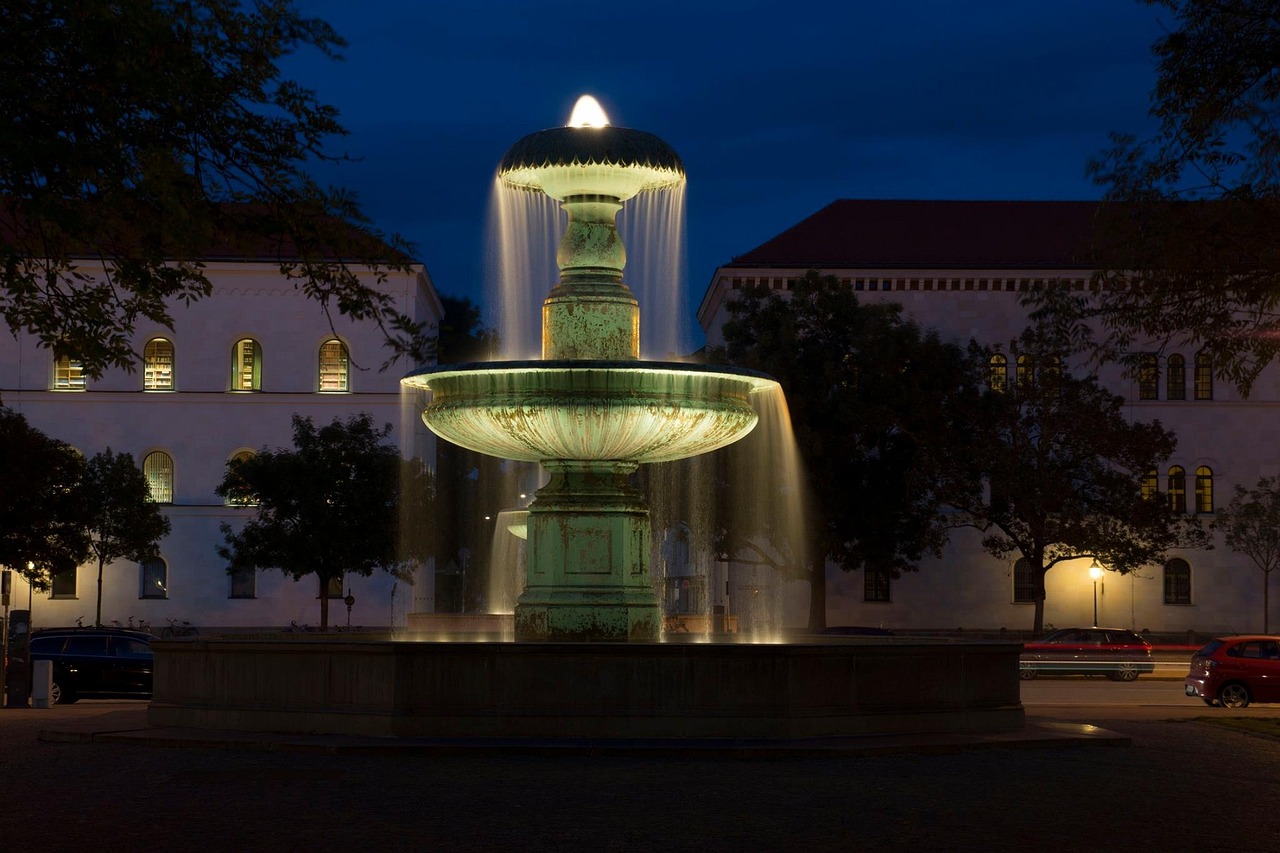Venice is a city located in northeastern Italy, on a group of small islands separated by canals and linked by bridges. It is known for its unique location on the water, while the largest Italian cities like Rome, Milan and Naples are all located on land. Venice is the capital of the Veneto region and has a population of around 260,000 people. It is also known for its picturesque canals, stunning architecture, and rich history as a major center of trade and commerce during the Middle Ages and Renaissance periods. The city is a popular tourist destination and is famous for its unique transportation system, which relies on boats and gondolas to navigate the waterways.
Short History
Venice was founded in the 5th century AD by refugees fleeing barbarian invasions on the Italian mainland. These refugees settled on a group of small islands in the Venetian Lagoon, which was protected by marshes and swamps. Over time, Venice grew into a powerful city-state and became an important center of trade and commerce between Europe and Asia. The Venetian Republic lasted for over 1,000 years, from the 7th century until 1797, when it was conquered by Napoleon.
During its golden age, Venice was known for its art, architecture, and cultural achievements. The city was a major patron of the arts, and many famous artists, such as Tintoretto and Titian, worked and lived there. Venice also played an important role in the Renaissance, and its universities and schools produced some of the greatest thinkers and scientists of the time.
Today, Venice is a UNESCO World Heritage Site and continues to attract millions of visitors each year, who come to see its stunning architecture, beautiful canals, and colorful cultural heritage.
Architecture
The architecture of Venice is renowned for its unique blend of styles and influences from various periods of history. The city’s architecture is characterized by Gothic, Byzantine, and Renaissance styles, which are often blended together to create a unique Venetian style.
One of the most iconic examples of Venetian architecture is the Piazza San Marco, or St. Mark’s Square, which features several stunning buildings, including St. Mark’s Basilica, the Doge’s Palace, and the Clock Tower. St. Mark’s Basilica is a prime example of Byzantine architecture, with its intricate mosaics, marble columns, and domed roof. The Doge’s Palace, which served as the residence of the Doge of Venice and the seat of government, is a blend of Gothic and Renaissance styles, with its imposing façade and ornate interior.
Another famous example of Venetian architecture is the Rialto Bridge, which is the oldest and most famous of the four bridges that cross the Grand Canal. Built in the late 16th century, the bridge features a central portico with two rows of shops on either side, which were used by merchants to sell their goods.
Venetian architecture is also known for its distinctive use of marble, which is used extensively in the city’s buildings, along with red and white brick. The city’s narrow streets and canals also contribute to the unique charm and character of its architecture, with colorful buildings lining the waterways and ornate bridges connecting the various islands.
Museums and Galleries
Venice is home to several world-renowned museums and galleries, featuring some of the most important works of art from the city’s rich cultural heritage. Here are some of the most interesting museums and galleries in Venice:
- Gallerie dell’Accademia – This museum houses one of the largest collections of Venetian art in the world, featuring works by famous artists such as Bellini, Tintoretto, and Titian.
- Peggy Guggenheim Collection – This modern art museum features works by some of the most important artists of the 20th century, including Picasso, Dalí, and Pollock.
- Ca’ Rezzonico – This 18th-century palace is now a museum of 18th-century Venetian art and culture, featuring exhibits on Venetian life, fashion, and decorative arts.
- Palazzo Grassi – This contemporary art museum features temporary exhibitions of modern and contemporary art in a stunning 18th-century palace.
- Doge’s Palace – While primarily a historical museum, the Doge’s Palace also features an impressive art collection, including works by Tintoretto, Veronese, and Carpaccio.
- Museo Correr – This museum features exhibits on the history and culture of Venice, with a focus on the city’s role as a cultural and political center during the Venetian Republic.
- Scuola Grande di San Rocco – This 16th-century building features stunning Renaissance architecture and houses an impressive collection of paintings by Tintoretto, one of Venice’s most famous artists.
Whether you’re interested in classical art, modern art, or Venetian history and culture, there’s something for everyone in Venice’s museums and galleries.
Landmarks and Monuments
Venice is a city of stunning architecture and cultural heritage, with many iconic landmarks and monuments to explore. Here are some of the most interesting landmarks and monuments in Venice:
- St. Mark’s Basilica – This stunning cathedral is one of the most iconic landmarks in Venice, with its intricate mosaics, ornate domes, and towering bell tower.
- Doge’s Palace – This impressive palace served as the seat of government for the Venetian Republic and features stunning architecture, beautiful frescoes, and an impressive art collection.
- Rialto Bridge – This iconic bridge spans the Grand Canal and is one of the oldest and most famous bridges in Venice, with beautiful views of the canal and surrounding architecture.
- Piazza San Marco – This beautiful square is the heart of Venice, with its stunning architecture, outdoor cafes, and lively atmosphere.
- Peggy Guggenheim Collection – This modern art museum is housed in a beautiful palazzo on the Grand Canal and features works by some of the most important artists of the 20th century.
- Bridge of Sighs – This ornate bridge connects the Doge’s Palace to the prison and was named for the sighs of prisoners as they crossed from the courtroom to their cells.
- Santa Maria della Salute – This beautiful church is one of the most iconic landmarks in Venice, with its distinctive dome and stunning Baroque architecture.
These are just a few of the many landmarks and monuments to explore in Venice, each offering a glimpse into the city’s valuable cultural and architectural heritage.
Parks and Green Spaces
Venice is a densely populated city with limited green spaces, but there are a few parks and gardens that offer a respite from the bustling streets and canals. Here are some of the most notable parks and green spaces in Venice:
- Giardini della Biennale – This park is located on the eastern edge of Venice and features a large expanse of green space, walking paths, and several pavilions used for art exhibitions during the Venice Biennale.
- Parco delle Rimembranze – This park is located on the island of Lido and features a large grassy area, playgrounds, and a historic war memorial.
- Papadopoli Gardens – These gardens are located near the Grand Canal and offer a peaceful retreat with a large central fountain, walking paths, and benches for relaxing.
- Orto Botanico di Venezia – This botanical garden is located on the island of Giudecca and features a variety of plants and trees, as well as a greenhouse and a pond with fish and turtles.
- Giardino Reali – These gardens are located near St. Mark’s Square and were originally built for the royal family. Today, they offer a tranquil escape from the busy streets and feature a variety of plant life and beautiful statues.
While Venice may not be known for its parks and green spaces, these areas offer a welcome relaxation from the crowds and a chance to enjoy some peace and quiet amidst the stunning architecture and canals.
Beaches
Venice is not known for its beaches, as it is located in a lagoon and surrounded by water. However, there are a few beaches located near Venice that are worth visiting. One of the closest beaches is Lido di Venezia, which is located on a narrow island between the lagoon and the Adriatic Sea. Lido di Venezia is known for its long sandy beaches, clear waters, and lively atmosphere. Another beach that is located near Venice is Sottomarina, which is located in the town of Chioggia, about an hour’s drive south of Venice. Sottomarina is known for its wide sandy beaches, clear waters, and family-friendly atmosphere. While Venice may not be the first destination that comes to mind for beach lovers, these nearby beaches offer a nice change of pace from the city’s historic center and are worth a visit if you have the time.
Shopping Districts
Venice is known for its unique and stylish shopping districts that offer a variety of goods, from handmade crafts to high-end fashion. Here are some of the most popular shopping districts in Venice:
- Rialto Market – This is Venice’s main market and is located near the Rialto Bridge. It is known for its fresh produce, seafood, and other food items, as well as souvenirs and crafts.
- Mercerie – This is one of the main shopping streets in Venice, located between St. Mark’s Square and the Rialto Bridge. It is known for its high-end fashion boutiques, jewelry stores, and specialty shops.
- Calle Larga XXII Marzo – This street is located near St. Mark’s Square and is known for its luxury fashion boutiques, including brands like Prada, Gucci, and Louis Vuitton.
- Strada Nova – This is a busy shopping street in Venice that offers a wide range of shops, including fashion boutiques, souvenir shops, and specialty stores.
- Murano Island – Murano is known for its glass-making traditions, and visitors can shop for handcrafted glassware, jewelry, and other items on the island.
Whether you’re looking for luxury fashion, unique souvenirs, or local specialties, Venice’s shopping districts offer something for everyone.
Food and Drink
Venice is known for its unique cuisine, which is influenced by its location on the water and the city’s history. Here are some of the top foods and drinks to try in Venice:
- Cicchetti – These are small, savory snacks that are typically served in bars and taverns throughout Venice. Cicchetti can include a variety of ingredients, such as seafood, meat, and vegetables.
- Seafood – Venice is known for its fresh seafood, which can be found in many of the city’s restaurants. Popular seafood dishes include grilled squid, fried sardines, and risotto with clams.
- Risotto – Venice is famous for its risotto, which is often made with seafood, such as shrimp, squid, or cuttlefish. The rice is cooked slowly in broth, resulting in a creamy and flavorful dish.
- Spritz – This is a popular Venetian aperitif made with Prosecco, Aperol, and soda water. It’s often served with a slice of orange and is a refreshing drink to enjoy before a meal.
- Gelato – Gelato is a popular dessert in Venice, and there are many gelaterias throughout the city. Look for gelato made with fresh, local ingredients, such as pistachios, hazelnuts, or seasonal fruit.
- Bellini – This is a cocktail made with Prosecco and peach puree, and is said to have been invented in Venice. It’s a sweet and fruity drink that’s perfect for sipping while enjoying the city’s beautiful views.
- Tiramisu – This is a classic Italian dessert that originated in the Veneto region, which includes Venice. Tiramisu is made with layers of sponge cake, coffee, and mascarpone cheese, and is a delicious way to end a meal in Venice.
These are just a few of the many delicious foods and drinks to try in Venice. Be sure to explore the city’s markets, bakeries, and restaurants to discover even more culinary delights.
Transportation
Venice is a pedestrian-friendly city, and walking is the most common way to get around. However, since the city is spread over more than 100 islands, there are several modes of transportation available to explore it:
- Water buses (Vaporetti): These are the most common and affordable way to get around Venice’s waterways. Vaporetti cover most of the city’s popular destinations, including the Rialto Bridge, St. Mark’s Square, and the Lido.
- Water taxis: These are more expensive than vaporetti, but they offer a more luxurious and private way to travel around the city. They are ideal for those who want to avoid the crowds and reach their destination quickly.
- Gondolas: These are the traditional boats of Venice and are primarily used for sightseeing rather than transportation. They are perfect for a romantic ride along the canals, but they can be quite expensive.
- Walking: Venice is a relatively small city, and most of the main attractions are within walking distance of each other. Exploring on foot is the best way to get a feel for the city’s unique atmosphere and discover its hidden corners.
- Cycling: Although not as popular as walking or boating, cycling is also an option for getting around Venice. Some areas of the city have designated bike lanes, and bike rental shops are available. However, it’s important to note that many of the city’s narrow streets and bridges are not suitable for bicycles.
Safety
Venice is generally a safe city, with low levels of crime. However, like any tourist destination, visitors should take some basic precautions to ensure their safety.
One common issue in Venice is pickpocketing, especially in crowded areas such as Piazza San Marco and on vaporetti (water buses). Visitors should keep an eye on their belongings and avoid carrying large amounts of cash or valuable items with them.
In addition, visitors should be cautious when walking around Venice at night, especially in less crowded areas. It’s also a good idea to stay on well-lit streets and to avoid isolated areas.
Overall, visitors can enjoy a safe and pleasant stay in Venice by taking basic safety precautions and being aware of their surroundings.
Expensive or Cheap
Venice is generally considered to be an expensive city, especially for tourists. The cost of accommodation, food, and attractions can be quite high, particularly in the more popular tourist areas.
Hotels in Venice can be expensive, especially if you are looking for a room with a view of the canals. Dining out can also be pricey, especially if you opt for restaurants in the tourist hotspots such as Piazza San Marco.
That being said, there are ways to save money in Venice. For example, visitors can choose to stay in budget accommodations, eat at local trattorias and pizzerias, and take advantage of free attractions such as visiting the many beautiful churches in the city.
In summary, Venice can be an expensive city, but with a little research and planning, visitors can still enjoy all that the city has to offer without breaking the bank.
Best Time to Travel
The best time to travel to Venice is during the shoulder season, which falls between April to June and September to November. During these months, the weather is pleasant, and the crowds are thinner, making it easier to explore the city without feeling overwhelmed by the number of visitors. The high season in Venice is during the summer months of July and August when the city is bustling with tourists, and the temperatures can be hot and humid. The winter season from December to February can be cold and damp, but it can also offer a more authentic experience of Venice without the crowds. However, it’s important to keep in mind that flooding can occur during the winter months, especially in November and December, so it’s important to check the weather and tide conditions before planning a trip to Venice during this time.
Date Ideas, Activities or Experiences
Venice is a romantic city, perfect for couples looking for a special date. Here are some ideas:
- Take a Gondola ride: A gondola ride is one of the most romantic things to do in Venice. Take a private gondola ride with your partner and enjoy the view of the beautiful canals.
- Enjoy a sunset at St. Mark’s Square: St. Mark’s Square is one of the most beautiful and romantic places to watch the sunset. Enjoy a glass of wine while admiring the stunning views.
- Have dinner at a rooftop restaurant: There are many rooftop restaurants in Venice where you can enjoy a romantic dinner with a view. The restaurants offer a wide range of cuisines and a great selection of wines.
- Visit the Peggy Guggenheim Collection: The Peggy Guggenheim Collection is a modern art museum located on the Grand Canal. It has a great collection of works by many famous artists, making it an ideal spot for art-loving couples.
- Take a cooking class together: Italian cuisine is famous all over the world. Take a cooking class with your partner and learn how to make some authentic Italian dishes.
- Take a tour of the Venetian islands: There are many beautiful islands around Venice that are worth visiting, such as Murano, Burano, and Torcello. Take a boat tour and explore these beautiful islands together.
- Attend an opera or a concert: Venice has a rich history of music and opera. Attend a performance together and experience the magic of music in this beautiful city.
These are just a few ideas for a romantic date in Venice. There are many more things to see and do, so get out and explore the city with your loved one!
Fun and Interesting Facts
Venice is a unique city in Italy that is famous for its stunning canals, historic landmarks, and romantic atmosphere. It is a popular tourist destination, attracting millions of visitors each year. The city is built on a group of 118 small islands separated by canals and linked by over 400 bridges, making it a one-of-a-kind destination. Here are some fun and interesting facts about Venice:
- Venice was founded over 1,500 years ago and has a rich history as a powerful maritime republic.
- The city’s unique canals and waterways are the primary means of transportation, making it a truly unique destination.
- Venice is built on 118 small islands separated by canals and connected by bridges. The canals serve as the main transportation routes in the city.
- The city has no roads for cars, buses or trucks, making it one of the few pedestrian cities in the world.
- Venice is home to over 400 bridges, the most famous of which is the Rialto Bridge.
- Venice is known for its glass-making industry, with the island of Murano being home to some of the most renowned glass-makers in the world.
- St. Mark’s Basilica is one of the most famous landmarks in Venice, with its Byzantine-style architecture and stunning mosaics.
- Venice is home to several historic palaces, including the Doge’s Palace and Ca’ d’Oro.
- Gondolas are a popular mode of transportation and a quintessential symbol of Venice. They are also the oldest type of transportation still in use in the city.
- Venice was the birthplace of Antonio Vivaldi, one of the greatest composers of the Baroque era.
- Venice is renowned for its unique Gothic-Byzantine architecture and is considered one of the most beautiful cities in the world.
- The city is sinking at an average rate of 1-2 millimeters per year due to a combination of factors such as rising sea levels, groundwater extraction, and the weight of the buildings on the soft soil.
- The famous Venetian gondolas are handmade and traditionally crafted from 8 different types of wood.
- Venice is home to the oldest Jewish ghetto in Europe, established in 1516.
- The Carnival of Venice is a famous annual festival that attracts visitors from around the world. The festival dates back to the 11th century and is known for its elaborate masks and costumes.
- Venice has been the backdrop for many famous movies, including “The Italian Job,” “The Tourist,” and “Indiana Jones and the Last Crusade.”
- The famous Venetian cuisine includes dishes such as risotto al nero di seppia (risotto with cuttlefish ink), sarde in saor (sweet and sour sardines), and fegato alla veneziana (Venetian-style liver).
Conclusion
Venice is a fascinating destination that offers a unique blend of history and art, and is a city unlike any other, known for its stunning architecture, romantic canals, and splendid cultural heritage. With its unique atmosphere and charm, it is no wonder that this city is one of the most popular destinations in the world. Whether you’re strolling through the narrow streets of the historic center, cruising along the canals, or marveling at the art and architecture of the city’s many landmarks and museums, Venice is a city that offers something for everyone. From the romantic gondola rides to the bustling markets and delicious cuisine, there is no shortage of experiences to be had in this iconic city. However, the city’s sinking and vulnerability to flooding require careful consideration when planning a trip. Overall, if you’re looking for a destination that combines history, culture, and romance, Venice is the perfect choice.



